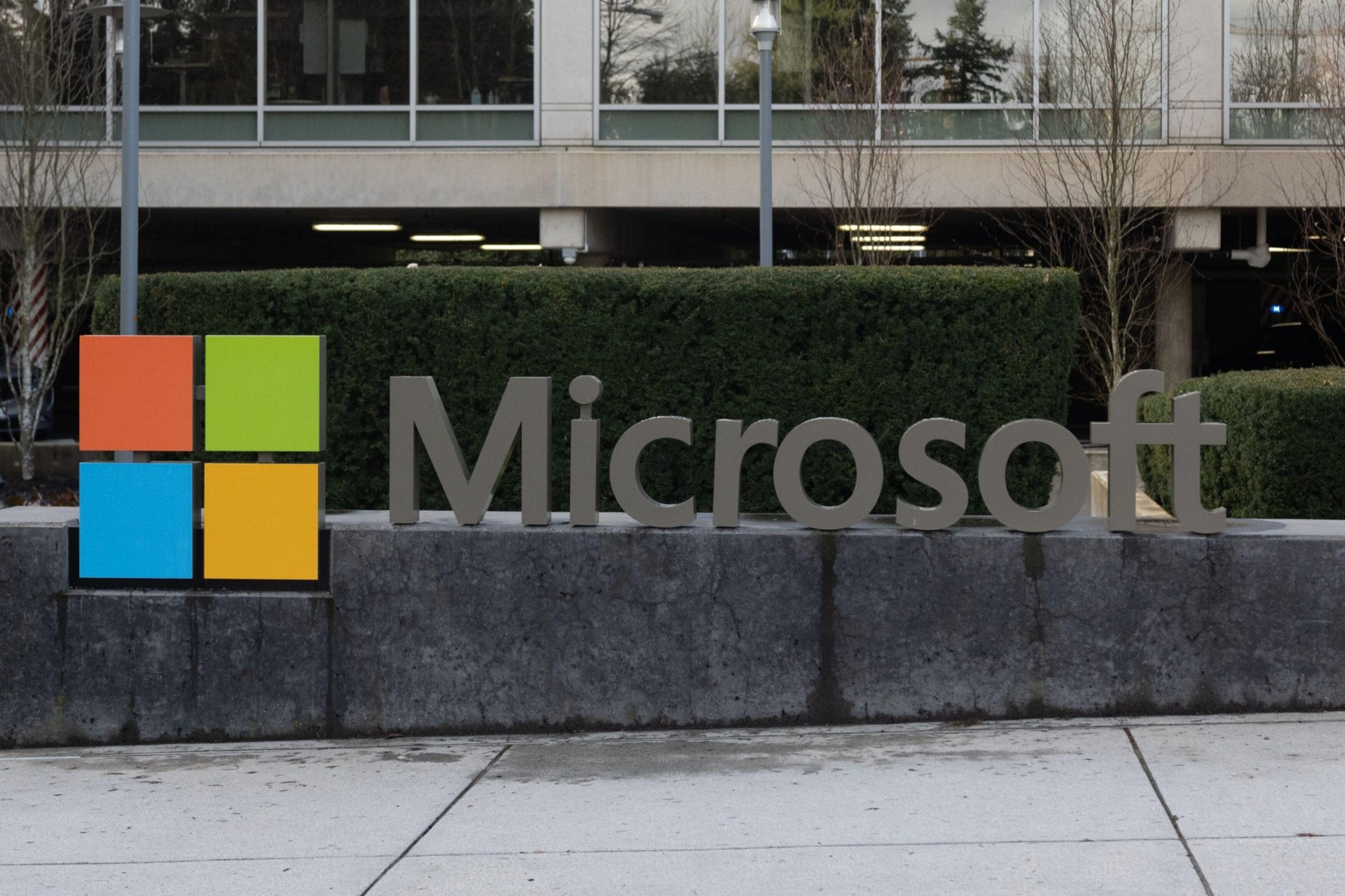Microsoft Corp. posted tepid quarterly sales growth and forecast a continued slowdown in its Azure cloud-services business, overshadowing optimism about customer interest in new artificial intelligence-powered products. Shares were down about 3% Wednesday morning in New York.
While overall results in the period ended June 30 topped analysts’ projections, Azure revenue growth slipped to 27%, excluding currency impacts, from 31% in the previous quarter. The world’s largest software maker projected that Azure gains would slow further in the current quarter, and said it would boost spending to expand data centers for new cloud services — while expecting only a gradual increase in AI revenue.
Still, the company’s Office productivity suite including AI isn’t yet broadly available, and overall spending on Azure services and Office applications is easing after several years of rising corporate investments. The company’s lackluster Azure outlook stifled some hopes that the new offerings would jump-start growth in a business that has fueled the company’s revival for the past decade but has decelerated in recent years.
“While Microsoft is better positioned than other cloud providers to monetize new AI investments, we think it can take a few quarters for that growth to kick in,” said Bloomberg Intelligence analyst Anurag Rana.
The shares fell to $340.16 as markets opened. The stock rose 18% in the three months ending in June, outpacing the 8.3% increase in the S&P 500 Index in that period. Last week, shares of Microsoft reached a record high on expectations for new AI products.
Azure revenue growth for the first quarter of fiscal 2024, which ends in September, will be 25% to 26%, excluding the impact of currency fluctuations, Microsoft Chief Financial Officer Amy Hood said on a conference call. In the same period a year earlier, Azure sales jumped 42%, and they gained 48% in the first quarter of fiscal 2022.
Hood said the recent period’s Azure growth rate was at the high end of what she had forecast, noting that she was “quite pleased with that number.” It’s typical for customers to try to get the most of cloud-based products they have already purchased, she said in an interview, but she expects less of an impact to Microsoft’s results in the coming quarters.
On the call, Nadella said Azure sales in 2023 represented more than half of the company’s total $110 billion of cloud-related revenue, the first time that Azure has reached that milestone. It also marks a gain from Azure revenue of about $34 billion in fiscal 2022 — a figure disclosed as part of the US Federal Trade Commission’s lawsuit seeking to halt Microsoft’s acquisition of Activision Blizzard Inc.
Some of the growth was fueled by Azure OpenAI, Microsoft’s cloud service for businesses that want to use OpenAI’s artificial-intelligence tools. The offering now has 11,000 customers, Nadella on a conference call following the software maker’s fourth-quarter earnings report. That compares with the 4,500 that Microsoft reported in mid-May.
“I’m very encouraged by the pace of adoption of our AI tools,” Hood said in the interview.
Profit in the period ended June 30 was $2.69 a share and sales rose 8% to $56.2 billion, the software maker said in a statement Tuesday. For the fiscal fourth quarter, analysts on average had estimated $2.56 a share in earnings and $55.5 billion in sales, according to a Bloomberg survey.
Annual sales growth moderated to 7% in 2023, the company said, after five straight years of increases above 10%. Microsoft fired 10,000 workers in the March quarter, including in key businesses like Azure and security software. The Redmond, Washington-based company made a smaller number of additional layoffs in July, in areas like sales and support.
The company is increasing spending to expand data centers and purchase chips needed to run complex AI systems. To make up for the hefty investments, Microsoft is rolling out ways to generate money from those products; earlier this month, the company set a price tag of $30 a month per user for its Office AI tools, called Microsoft 365 Copilot — on top of what most business customers already pay for the business productivity package, which includes Word, Excel, email and conferencing software.
Microsoft has invested $13 billion in startup OpenAI, a partnership that vaulted the 48-year-old software maker to the forefront of a race to build new applications that let customers create new content from their existing data as well as information scraped from the web. Microsoft is overhauling most of its products — including Office, Windows, Azure and Bing search — around OpenAI’s latest language model, GPT-4, and adding chatbot technology similar to the startup’s viral hit ChatGPT.
Microsoft’s sales from Windows operating system software sold pre-installed on computers fell 12% in the June quarter, a period when global PC shipments dropped 13%, according to market research firm IDC. Though that industry decline marked the sixth straight quarterly contraction in the market, total unit sales were better than forecast, IDC said. Microsoft’s Hood said some back-to-school PC sales occurred in the June quarter, helping to bolster results, but overall trends in the PC market are unchanged. Revenue from devices fell 20%.
Microsoft’s Xbox video-game content and services revenue gained 5% in the quarter. The software maker’s $69 billion deal to acquire game publisher Activision, which has been working its way through regulatory challenges, was initially forecast to be completed by the end of June, but the companies last week extended their merger agreement until Oct. 18 to give Microsoft more time to work out the final hurdles.
In the past two weeks, momentum has shifted in favor of the deal — the US Federal Trade Commission lost a bid to block it in court, and the UK’s Competition and Markets Authority said it will take the unprecedented step of reengaging in talks with the companies to restructure the transaction.
“We’ll focus on working through the remaining regulatory bodies and working toward closing — that’s where our energy is,” Hood said.
Note:- (Not all news on the site expresses the point of view of the site, but we transmit this news automatically and translate it through programmatic technology on the site and not from a human editor. The content is auto-generated from a syndicated feed.))



